Creating an Autism-Friendly Home
A Parent Perspective: Incorporating ABA Into Your Home Environment
Scrolling through social media one day, this post completely captured my feelings of home:

I love my home. I love being at home. And I love inviting people over to my home. It’s literally my favorite place to be. It reflects my personality, my priories, and it is a place of comfort and safety for me and my family.
For many families, including mine, raising a child with autism can present challenges in creating a comfortable, safe, and autism-friendly home environment. Adjustments and sacrifices become necessary. But even with minimal changes, our homes can be a more peaceful haven for everyone.
Throughout the past decade, I’ve learned to embrace modifications in my home to accommodate my son with autism. Incorporating visual cues, sensory toys, and safety features has had a positive impact without major home renovations.
In this blog post, I’ll share simple and effective ways to create an autism-friendly or ABA-friendly home. I’ll focus on communication, play, sensory experiences, sleep, and safety. We’ll explore how to transform your home into the best possible space for your family, implementing ABA techniques when possible.
As the therapists at ABA Connect constantly remind me, making play a priority is essential to the progress of our kids. As we accept our kids and their unique needs, we can foster a fun and loving home environment that also honors their humanity.
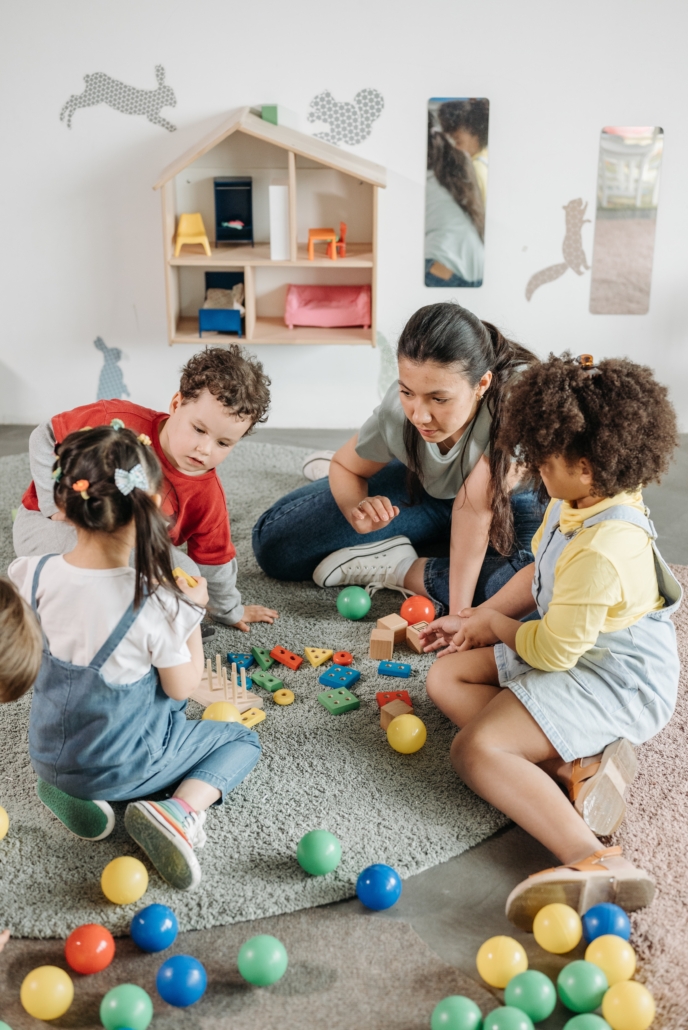
Photo by Pavel Danilyuk: https://www.pexels.com/photo/woman-in-gray-shirt-sitting-beside-girl-in-yellow-shirt-8422262/
Enhancing Communication at Home: ABA Tools for Effective Connection
Communication is vital for building strong relationships, including with our children on the autism spectrum. At ABA Connect, we understand the importance of finding effective ways to connect and communicate with our kids. Here are some practical ABA communication tools that you can implement in your home.
- Visual Supports: Utilize visual schedules, picture cards, and first-then boards to break down complex tasks into simpler steps. These visual aids help your child understand expectations and navigate daily routines more independently.
- AAC Devices: Keep your child’s Augmentative and Alternative Communication (AAC) device charged and easily accessible if your child uses a device. Keeping it in the same location when not in use empowers your child to express their needs, wants, and thoughts effectively, even if verbal communication is challenging.
- Break Requests: Always provide your child with the option to ask for a break, alone time, or express their need to say “no.” This fosters self-advocacy and allows them to regulate their sensory needs or emotions, promoting a more comfortable and respectful environment.
- Consistency and Structure: Maintain consistency in using communication tools and visual supports. Display a visual schedule to provide a clear overview of the day’s activities. Use timers to help your child understand transitions and manage time effectively.
By implementing these ABA-friendly communication tools in your home, you can enhance communication, reduce frustration, and strengthen the connection with your child.
To learn more about developing practical strategies to create an environment that supports effective communication and promotes growth for your child with autism, contact ABA Connect.
Creating a Playful ABA Environment at Home: Nurturing Development through Play
In our journey with autism, we’ve discovered that the most effective therapies are those that feel like play. At home, it’s essential to foster a fun environment that promotes development and allows children to engage in the joy of play.
If you have a dedicated playroom, it can be a valuable space for practicing sustained attention and independent play. Customize the room with toys that your child finds entertaining and comforting, including items for stimming. Consider incorporating technology or enticing books, providing a range of options to suit your child’s interests.
Make sure to distribute play toys throughout the house. You can set out easily accessible baskets or designated areas where your child can find comfort and engage with preferred toys. Consider bookshelves that function like file cabinets to facilitate easy access to books. This encourages independent book exploration without causing frustration or disorganization. The things your child loves can be placed strategically in different rooms, enticing exploration and engagement wherever your child may be.
Collaborate with your BCBA to organize a playroom or bedroom space that suits your child’s needs. It may involve limiting the number of toys to prevent overstimulation and rotating toys periodically to keep things interesting. Introducing new toys gradually allows your child to warm up to different experiences and expand their interests over time.
By creating a playful ABA environment at home, you provide opportunities for your child to develop and thrive through play.
Join us at ABA Connect as we explore practical strategies to optimize playtime, engage sustained attention, and cultivate an atmosphere that promotes growth and enjoyment for your child with autism.
Creating Sensory Spaces at Home: Nurturing Sensory Needs for Your Child
Understanding your child’s sensory tendencies is a crucial step in creating a sensory-friendly home environment. Whether they seek sensory input or avoid overstimulation, there are numerous ways to incorporate sensory elements into your space.
Let’s explore some favorite sensory-friendly additions that can support your child’s sensory needs:
- Crash Pad: Create a designated crash pad area where your child can safely jump, crash, and release energy.
- Indoor or Outdoor Trampoline: A trampoline provides a dynamic sensory experience, offering bouncing fun and proprioceptive input.
- Lycra Swing or Disk Swing: Install a lycra swing or disk swing in a secure area, allowing your child to experience soothing vestibular input.
- Ball Pit: Set up a ball pit filled with soft balls for tactile exploration and deep pressure input.
- Tunnel: Incorporate a tunnel for crawling, promoting spatial awareness and body integration.
- Peanut Ball or Balancing Ball: These versatile tools can enhance balance, coordination, and core strength while providing sensory input.
- Sensory Sock: A sensory sock provides a cozy and calming space for your child to relax and regulate their sensory system.
- Weighted Blankets and Weighted Vests: These comforting items offer deep pressure stimulation, promoting relaxation and a sense of security.
- Chewlery: Chewable jewelry, such as necklaces or bracelets, can provide oral sensory stimulation and serve as a safe outlet for chewing needs.
- Fidgets: Keep a variety of fidget toys on hand, offering tactile and proprioceptive input to help your child maintain focus and self-regulate. This is one of my favorites.
Remember, every child’s sensory preferences are unique, so it’s essential to observe and explore what works best for your child. But when you incorporate sensory elements into your home, you create a nurturing environment that supports their sensory needs and promotes overall well-being.
Creating an ABA-friendly home environment is well worth the investment; it not only celebrates your child but also supports your child’s development.
Ensuring Safety: Modifying Your Home for the Safety of Your Child with Autism
When it comes to creating an ABA-friendly home environment, prioritizing your child’s physical safety is as crucial as nurturing their emotional well-being. Implementing safety measures tailored to your child’s specific needs is essential. Here are some key considerations to enhance safety within your home:
- Childproof Locks: Install childproof locks on cabinets, drawers, pantries, and fridges to prevent access to potential hazards, such as knives or medicines.
- Playroom/Bedroom Safety: Create a playroom that is free from choking hazards, especially if your child tends to put objects in their mouth. Also, have a dedicated room full of only soft surfaces if you have a child who likes to throw their body around. This designated space allows you to focus on other tasks, like taking a shower or cooking while ensuring your child’s safety.
- Sleep Safety: Sleep is a big deal for kids with autism and their parents. In recent years, tent beds have transformed everyone’s ability to sleep well at night. My personal favorite is the Abrams Safety Sleeper. It can be strapped to a regular bed frame or set on the floor.
- Physical and Visual Impairments: If your child has visual impairments, consider adding grab bars near steps and implementing visual cues for changes in surfaces. These safety mechanisms provide guidance and prevent accidents.
Don’t hesitate to consult your ABA therapist for expert advice on maintaining a safe environment for your child. They can share insights into effective safety products that have proven beneficial for other parents, offering valuable recommendations for your situation.
Remember, every child is unique, and safety modifications should be tailored to their individual needs. By implementing appropriate safety measures, you create a secure environment that fosters your child’s overall well-being.
Embracing Your Child’s Needs through ABA Tools at Home
Creating an ABA-friendly home environment for your child with autism requires some adjustments and adaptations. It may not align with your initial vision of a typical household. However, embracing your child’s unique needs and preferences will make your home feel comfortable and safe for everyone.
By incorporating sensory spaces, communication tools, play areas, safety measures, and maintaining consistent routines, you create an environment that promotes their development and well-being. Make their favorite stimming toys more accessible. And establish a sense of familiarity by keeping routines and toys in designated spots.
Ultimately, your home should reflect the love, understanding, and acceptance you have for your child. By embracing their unique journey and making necessary modifications, you are giving them support. And creating a nurturing environment helps them to grow, learn, and express themselves.
Continue to explore and implement strategies that align with your child’s specific needs. And remember, you’re not alone. Reach out to ABA Connect and other parents in the community for guidance and support. Together, we can create ABA-friendly homes that foster the happiness and development of our children with autism.
Join us on this journey of making your home a nurturing haven — an autism-friendly home environment. By implementing some of these things, your home can be a place where everyone can thrive.
If you have any questions or comments about ABA therapy, please leave them below. The team at ABA Connect is happy to help answer your questions.
And if you found this post helpful, please like, share, and follow for more content on autism or ABA therapy.
If you are interested in a positive, play-based approach to ABA, contact ABA Connect.
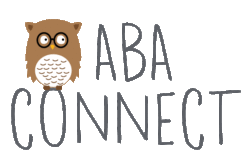
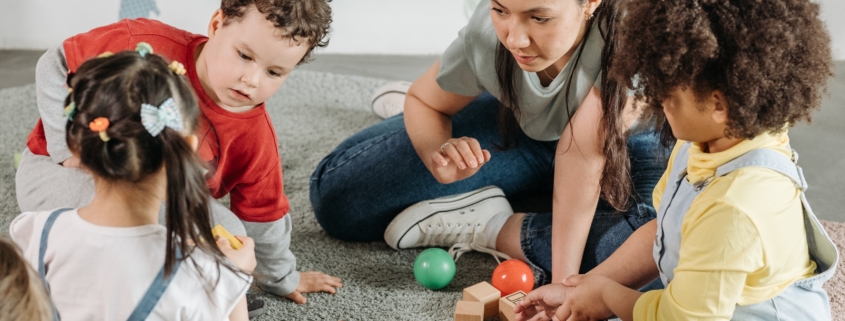
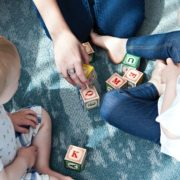 Photo by Marisa Howenstine on Unsplash
Photo by Marisa Howenstine on Unsplash

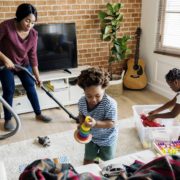

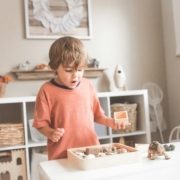


Leave a Reply
Want to join the discussion?Feel free to contribute!